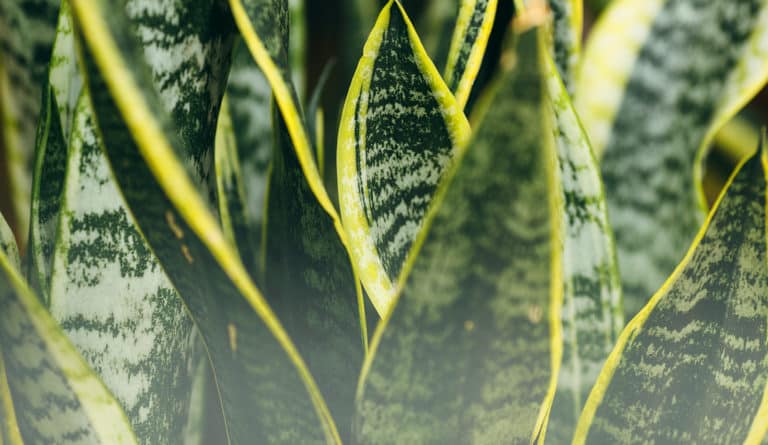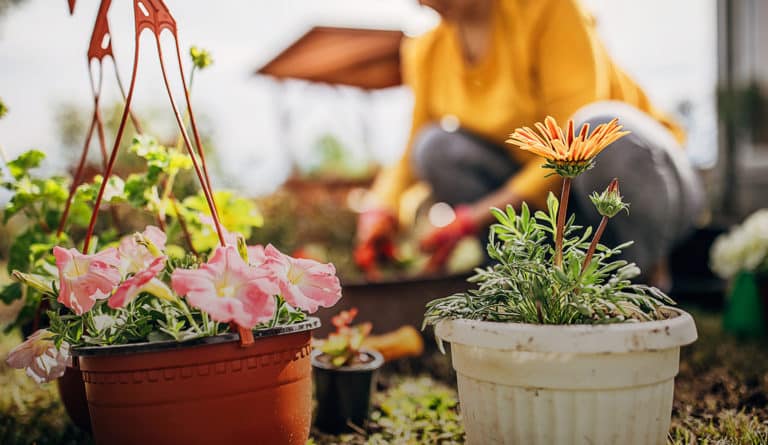
snake plant
aka sansevieria trifasciata, dracaena trifasciata, mother-in-law’s tongue, tigers tail
Nobody should be afraid of this snake! They’re bright, cheery and so easy to care for that many indoor gardeners describe them as “unkillable”. Let’s explore this Canada-wide favourite. Description: stiff, swordlike leaves / virtually indestructible / west Africa / tropical savannah / Recently learned to not be a part of the sansevieria family but in fact part of the dracaena family.
variations
There are something like 70 types of snake plant varieties, some are colour variations, others are different shapes and sizes. Some variations trfaciata black gold, robusta, elensis, zeylanca, Shark fin, whale fin, black coral, whitney, white owl, birds nest, rhino grass, cylinder snake plant as well as many others.
light
flexible
Snake plants adapt to most light conditions. These desert plants love bright light and even some direct sun. But they can also deal with low light. Leaf colours may change according to light conditions.
water + feeding
allow soil to dry between watering
Allow the top inch or two to dry out completely before watering again. Do not overwater. Feed once a month during spring and summer.
toxic
mildly toxic to humans and pets
Ingestion can cause mouth, stomach irritation and possible vomiting. Possible skin irritation when handling sap.
location
flexible
This tough plant thrives almost everywhere. It likes heat put can handle most temperatures, even drafts or dry air.
humidity
again, flexible
Snake plants do like the occasional misting, but they are so tough and cool that it’s not necessary.
size
small to medium
Some species stay desktop size, around a foot tall, and some are more floor models that grow over 3 feet tall. Check with your plant shop to confirm how big a snake you’re buying.
pro tip
use a heavier planter
Snake plants shoot their sword-like leaves skyward. This makes them top heavy as they grow. A heavier pot with a broad base will help prevent tipping.
fun fact
the night purifier
Most plants release oxygen during the day. The Snake’s desert lineage makes it one of the rare plants that makes oxygen at night. It’s also recognized as a top air cleaning plant.


beyond the basics
-
soil & potting
It’s a desert plant, so use a light, well-draining potting soil like Miracle-Gro Cactus, Palm and Succulent Potting Mix. Or, use regular potting soil and add some potting sand or perlite. A layer of sand on the top will help prevent rot. Ensure the pot has good drainage. Snakes should never sit in water. Empty drainage trays if you see water collecting.
-
when to repot
Every 2 to 3 years in the Spring, especially in the earlier years. Increase the pot size by 2 inches each repotting. In later years you can replace the top couple inches of soil instead of completely repotting. Snake growing too fast? Slow the growth by trimming the roots.
-
propagation
Grab a sharp knife or scissors, find one of the healthiest leaves, and cut it off at the base of the plant. Then cut the leaf into multiple horizontal strips (about 3 inches each). Let the ends dry for two days then put them in water to stimulate root growth. This step could take 2 to 3 weeks. When you’ve got roots, you’re ready to pot.
-
pest control
Mealybugs are most common. When you do your regular dusting, inspect the leaves. Check out our Pest control section in Plant 101 for how to identify and deal with pests on your plant!

troubleshooting
-
why are the leaves falling sideways?
Multiple possibilities. All easily fixed. Firstly, this may not be a problem at all. Overly mature leaves naturally fall away to make room new growth. But if many leaves are falling over before their time, it’s probably over or under watering. If the soil is bone dry, add a moderate amount of water for a few days in a row. Then be more diligent with your watering routine. If the soil is soaked, check your drainage and let the soil fully dry before starting a better routine. Light issues: Snake plants do well in low light but if they’re getting no light leaves may start to keel over. Move into some nice, bright, indirect light. Other causes? Maybe your Snake plant has outgrown its pot. This can cause it to become root-bound. It’s time to repot in something at least 2 inches wider.
-
why do I have yellowing leaves?
Probably overwatering. Are the leaves also a bit mushy? These are signs of root rot. Not to worry, when caught early this is easily fixable. Reduce watering and ensure the soil dries out before watering. Check your pot’s drainage. Does it have a hole that allows excess water to escape? Help things dry by poking holes in the soil. This will get oxygen to the roots. You can also put the pot (with drainage holes) in a tray that’s lined with a layer of dry soil. It acts like a sponge to draw out extra moisture. Now, let’s check for root rot. Dig down and cut out any that look affected. If things are really bad, consider repotting entirely with new soil. For more information check out our Plant 101 section.
-
why does this snake have wrinkled leaves?
Under-watering. Check the soil. It’s probably bone dry. Instead of dousing it all at once. Give your Snake plant a medium amount of water three days in a row. Nice and easy. Make sure it’s never sitting in pools of water. Those droopy leaves should rebound by day three.

snake plant
aka sansevieria trifasciata, dracaena trifasciata, mother-in-law’s tongue, tigers tail
Nobody should be afraid of this snake! They’re bright, cheery and so easy to care for that many indoor gardeners describe them as “unkillable”. Let’s explore this Canada-wide favourite. Description: stiff, swordlike leaves / virtually indestructible / west Africa / tropical savannah / Recently learned to not be a part of the sansevieria family but in fact part of the dracaena family.
variations
There are something like 70 types of snake plant varieties, some are colour variations, others are different shapes and sizes. Some variations trfaciata black gold, robusta, elensis, zeylanca, Shark fin, whale fin, black coral, whitney, white owl, birds nest, rhino grass, cylinder snake plant as well as many others.
light
flexible
Snake plants adapt to most light conditions. These desert plants love bright light and even some direct sun. But they can also deal with low light. Leaf colours may change according to light conditions.
water + feeding
allow soil to dry between watering
Allow the top inch or two to dry out completely before watering again. Do not overwater. Feed once a month during spring and summer.
toxic
mildly toxic to humans and pets
Ingestion can cause mouth, stomach irritation and possible vomiting. Possible skin irritation when handling sap.
location
flexible
This tough plant thrives almost everywhere. It likes heat put can handle most temperatures, even drafts or dry air.
humidity
again, flexible
Snake plants do like the occasional misting, but they are so tough and cool that it’s not necessary.
size
small to medium
Some species stay desktop size, around a foot tall, and some are more floor models that grow over 3 feet tall. Check with your plant shop to confirm how big a snake you’re buying.
pro tip
use a heavier planter
Snake plants shoot their sword-like leaves skyward. This makes them top heavy as they grow. A heavier pot with a broad base will help prevent tipping.
fun fact
the night purifier
Most plants release oxygen during the day. The Snake’s desert lineage makes it one of the rare plants that makes oxygen at night. It’s also recognized as a top air cleaning plant.

beyond the basics
-
soil + potting
Use a rich, well-draining, indoor potting soil, like Miracle-Gro® Indoor Potting Mix. Ensure your pot has good drainage. Don’t let it sit in water and if you notice water pooling in the drainage tray, empty it.
-
when to repot
Repot every 2 to 3 years in the Spring, especially with younger plants. Increase pot by 2 inches every time. When Pothos is more mature and fully grown, you can just replace the top few inches of soil.
-
propagation
Very easy with Pothos. Find a node or aerial root, cut just below the node and remove the lower leaves. Cutting can be put back in the soil, or in water. Cuttings will happily live in water for as long as you keep the jar topped up. This is a great way to add some green to darker, out-of-the-way places that are too small or awkward for a pot. For more information on propagation check out our propagation project page!
-
pest control
Prone to mealybugs and scale. During your routine leaf cleaning, inspect the underside. Check out our Pest control section in Plant 101 for how to identify and deal with pests on your plant!

troubleshooting
-
why is my pothos ‘crying’?
Could be normal “guttation”, or signs of over watering. Pothos have a natural tendency to ‘cry’. This expulsion of water from leaf pores is called “guttation” and it’s usually nothing to worry about. Review your watering routine. If you’re allowing the top 1 to 2 inches of soil to completely dry between watering, you’re good. If you’re overwatering and letting your Pothos sit in water, just drain the standing water, let the soil dry out and water less in the future.
-
drooping or wilting leaves?
Needs water. Does your Pothos look wilted and droopy? Do those normally perky heart-shaeped leaves feel thinner? Your poor Pothos is crying out for a drink. Instead of doing one giant dump of water, water a little once per day for three days. You want the soil pleasantly moist, not super soggy. Your Pothos should bounce back in just a few days.
-
brown spots or patchy?
Leaf spot disease due to overwatering. Overly damp conditions make most plants susceptible to disease, even the mighty Pothos. Isolate your Pothos to avoid spreading to other plants. This may be the hardest part because those vines may run all over the house. Cut off all the affected leaves and any debris that’s fallen into the pot. If you’ve been misting, stop. If there’s another source of humidity like a humidifier, or it’s next to your shower, move the plant away until those spots are gone. Treat with a fungicide.
-
long parts of your trail leggy and without leaves?
Inconsistent care. Pothos’ vines travel far and wide! Often they venture into low light areas, where leaves tend to fall off. That means your Pothos is wasting energy to support empty vines that can’t grow leaves. The solution is simple. Cut the vine where healthy clusters of leaves generally stop. If your cutting has leaves at the end, you can trim it so there’s at least two nodes below the leaves, then propagate.

snake plant
aka sansevieria trifasciata, dracaena trifasciata, mother-in-law’s tongue, tigers tail
Nobody should be afraid of this snake! They’re bright, cheery and so easy to care for that many indoor gardeners describe them as “unkillable”. Let’s explore this Canada-wide favourite. Description: stiff, swordlike leaves / virtually indestructible / west Africa / tropical savannah / Recently learned to not be a part of the sansevieria family but in fact part of the dracaena family.
variations
There are something like 70 types of snake plant varieties, some are colour variations, others are different shapes and sizes. Some variations trfaciata black gold, robusta, elensis, zeylanca, Shark fin, whale fin, black coral, whitney, white owl, birds nest, rhino grass, cylinder snake plant as well as many others.
light
flexible
Snake plants adapt to most light conditions. These desert plants love bright light and even some direct sun. But they can also deal with low light. Leaf colours may change according to light conditions.
water + feeding
allow soil to dry between watering
Allow the top inch or two to dry out completely before watering again. Do not overwater. Feed once a month during spring and summer.
toxic
mildly toxic to humans and pets
Ingestion can cause mouth, stomach irritation and possible vomiting. Possible skin irritation when handling sap.
location
flexible
This tough plant thrives almost everywhere. It likes heat put can handle most temperatures, even drafts or dry air.
humidity
again, flexible
Snake plants do like the occasional misting, but they are so tough and cool that it’s not necessary.
size
small to medium
Some species stay desktop size, around a foot tall, and some are more floor models that grow over 3 feet tall. Check with your plant shop to confirm how big a snake you’re buying.
pro tip
use a heavier planter
Snake plants shoot their sword-like leaves skyward. This makes them top heavy as they grow. A heavier pot with a broad base will help prevent tipping.
fun fact
the night purifier
Most plants release oxygen during the day. The Snake’s desert lineage makes it one of the rare plants that makes oxygen at night. It’s also recognized as a top air cleaning plant.


beyond the basics
-
soil & potting
This plant likes a light, well-draining soil like Miracle-Gro Cactus, Palm and Succulent Potting Mix. Or add some potting sand or perlite to regular potting soil. Your pot must have good drainage and don’t let Pilea sit in water. If you see water collecting in the drainage tray, dump it.
-
when to repot
Repot every 1 to 2 years in the Spring, especially with younger plants. Increase pot by 2 inches every time. If dealing with a more mature, fully grown plant you can just replace the top few inches of soil.
-
propagation
So easy, because Pilea is self-propagating. It creates tiny offshoots also known as ‘pups’. You can leave them on the plant, or create a new one. Wait until your Pilea pup is at least a few inches tall. Gently dig under the pup and cut (or gently pull) the plant free, ensuring you get roots. Put the pup in some water to grow stronger roots, or plant directly in soil. You have a new mini Pilea that makes a perfect gift!
-
pest control
Pileas are bug resistant, but pests are still possible. Inspect under the leaves when doing your regular dusting & cleaning. Check out our Pest control section in Plant 101 for how to identify and deal with pests on your plant!
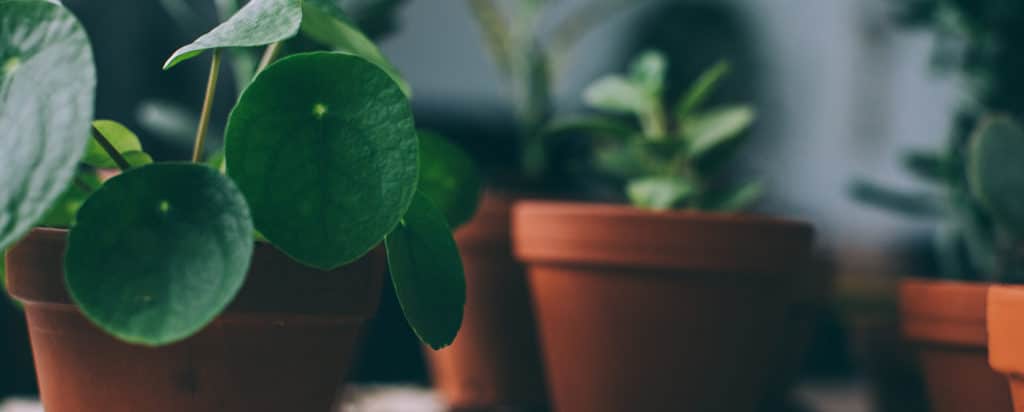
troubleshooting
-
leaves curved in, or out?
Light and water are incorrect. If the leaves are curled inwards, your Pilea is probably dehydrated. It’s not getting enough water, or it’s getting too much sun. On the flipside, If the leaves are curled outwards it’s probably too much water or not enough light. Check your soil before watering and ensure the top two inches of soil are dry before watering. Time between watering varies by plant and how much light they’re getting.
-
leaves turning yellow or dropping off?
Where are they yellowing? If only the bottom leaves are yellowing and dropping, there’s no problem. That’s normal Pilea behaviour. But If the whole plant is yellowing, you’re probably overwatering. When doing your watering routine, make sure the top 1 to 2 inches of soil are dry before watering.
-
leaves facing in one direction?
Rotate your plant! Pilea’s love to grow towards the sun. This can cause them to become one side heavy or grow unevenly. You should remember to turn your plant every time you water to allow the plant to grow evenly.
-
mold on the surface soil?
Overwatering, too little time between watering. Mold (and even mushrooms) growing on your soil is not a direct threat. But it IS a sign of overwatering. Root rot can follow if not addressed. Water less frequently and make sure you let the top two inches of soil fully dry before watering. Ensure you have proper drainage. If things look really moldy, you can remove the top inch or so of soil.
-
powdery, white patches on leaves?
Powdery mildew. Like mold, this isn’t dangerous, but it makes your precious Pilea less pretty! So it’s got to go. Bad air circulation is usually the cause. Remove affected leaves and move your plant somewhere with better air circulation.

snake plant
aka sansevieria trifasciata, dracaena trifasciata, mother-in-law’s tongue, tigers tail
Nobody should be afraid of this snake! They’re bright, cheery and so easy to care for that many indoor gardeners describe them as “unkillable”. Let’s explore this Canada-wide favourite. Description: stiff, swordlike leaves / virtually indestructible / west Africa / tropical savannah / Recently learned to not be a part of the sansevieria family but in fact part of the dracaena family.
variations
There are something like 70 types of snake plant varieties, some are colour variations, others are different shapes and sizes. Some variations trfaciata black gold, robusta, elensis, zeylanca, Shark fin, whale fin, black coral, whitney, white owl, birds nest, rhino grass, cylinder snake plant as well as many others.
light
flexible
Snake plants adapt to most light conditions. These desert plants love bright light and even some direct sun. But they can also deal with low light. Leaf colours may change according to light conditions.
water + feeding
allow soil to dry between watering
Allow the top inch or two to dry out completely before watering again. Do not overwater. Feed once a month during spring and summer.
toxic
mildly toxic to humans and pets
Ingestion can cause mouth, stomach irritation and possible vomiting. Possible skin irritation when handling sap.
location
flexible
This tough plant thrives almost everywhere. It likes heat put can handle most temperatures, even drafts or dry air.
humidity
again, flexible
Snake plants do like the occasional misting, but they are so tough and cool that it’s not necessary.
size
small to medium
Some species stay desktop size, around a foot tall, and some are more floor models that grow over 3 feet tall. Check with your plant shop to confirm how big a snake you’re buying.
pro tip
use a heavier planter
Snake plants shoot their sword-like leaves skyward. This makes them top heavy as they grow. A heavier pot with a broad base will help prevent tipping.
fun fact
the night purifier
Most plants release oxygen during the day. The Snake’s desert lineage makes it one of the rare plants that makes oxygen at night. It’s also recognized as a top air cleaning plant.

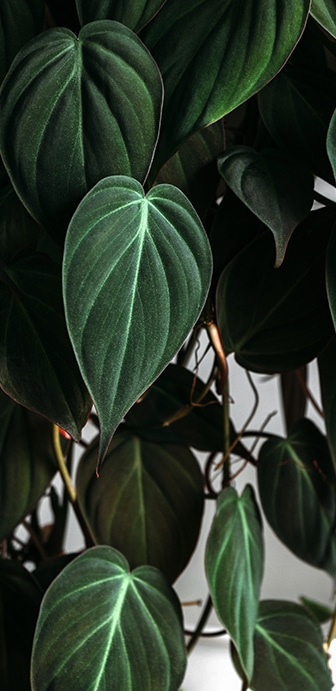
beyond the basics
-
soil & potting
Use a rich, well-draining, indoor potting soil, like Miracle-Gro® Indoor Potting Mix. Ensure your pot has good drainage. If you notice water pooling in the drainage tray, empty it.
-
when to repot
Repot every 2 years in the spring, especially with younger plants. Increase pot by 2 inches every time. If dealing with a more mature, fully grown plant you can just replace the top few inches of soil.
-
propogation
If you have a node or aerial root this plant is very easy to propagate. Cut just below the node and remove the lower leaves. Put in water and watch the roots grow in just a few short weeks! For more information on propagation check out our propagation project page!
-
pest control
Prone to mealybugs. Check the underside of leaves regularly when cleaning. Check out our Pest control section in Plant 101 for how to identify and deal with pests on your plant!
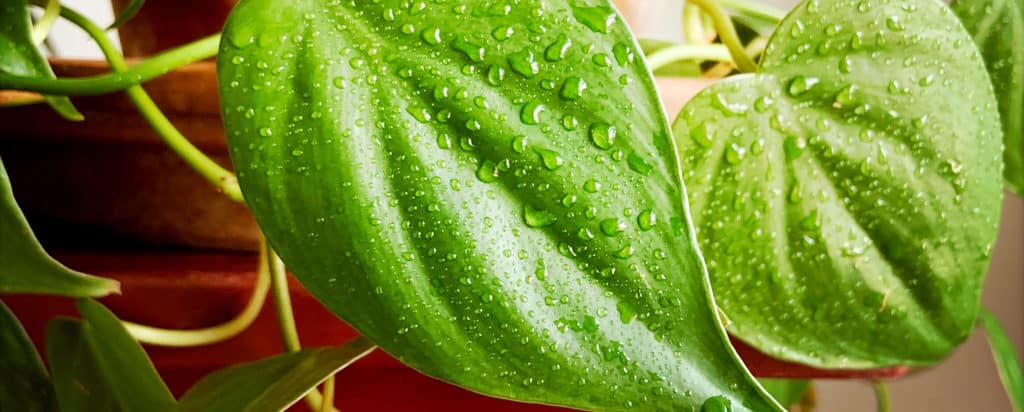
troubleshooting
-
yellowing lower leaves?
Low temperatures or drafts are probably the cause. Try moving your plant to a new location where it is clear of any drafts. Philodendrons like it warm, between 60 and 75 F (16 and 24C) It could also be underwatering or under fertilizing. Ensure you’re watering regularly when the top inch of soil becomes dry.
-
leaves dropping?
Probably a cold draft. Move to warm location that’s clear of any drafty windows or the air conditioning vent. It’s a hardy plant but still likes temps between 60 and 75 F (16 and 24C)
-
brown edges on the leaves?
Various. The soil could be too dry. Water regularly when the top inch of soil gets dry. Water until the soil is moist, but not soggy. If the air feels dry and the temp is over 75F (24C,) mist the leaves regularly. Consider a humidifier, or put the pot on a pebble-filled tray of water (making sure the pot is not touching the water). Philodendrons don’t like cold drafts, so this could also be the problem. Move away from cold windows or AC vents.

aloe vera
aka aloe barbadensis
Say “Ola” to this easy to grow succulent. Often touted as a “miracle” plant for its skin soothing gel, but the real miracle is how cute they look. An all-around great plant for rookies and exerts alike. Description: easy to grow succulent / soothes burns and skin irritations / southeast Arabian Peninsula / tropical
variations
Aloe Vera has a whopping 250 varieties. So many wonderful little differences to mix and match.
light
bright, indirect light
Find a spot with plenty of indirect light, and ideally a few hours of direct light.
water + feeding
allow to mostly dry out between watering
The top inch should be dry before watering again. Don’t overwater! It’s a desert plant. Feed once in spring, and once in summer.
toxic
safe on skin post likely toxic to ingest
Aloe gel is safe and soothing on the skin. You can even eat some varieties, but note! Most can cause indigestion, vomiting and airway irritation if eaten. Unless you’re 100% sure, keep away from kids and pets.
location
adaptable
Comfy with average indoor temperatures. Prefers things on the warmer side and doesn’t like drafts.
humidity
not an issue
Appreciates an occasional misting to control dust. Humidity levels aren’t a concern for this hearty little fella.
size
small to medium
Usually bought small and can to about 2 feet.
pro tip
water at soil level
Aloe doesn’t like water pooling in the creases between its leaves. That can cause leaf rot.
fun fact
it’s a super soother
Those thick, juicy leaves contain a soothing green gel that can be applied directly to burns (especially sun burns) and bug bites. External use only! It’s toxic to ingest.


beyond the basics
-
soil & potting
Use a light, well-draining potting soil like Miracle-Gro Cactus, Palm and Succulent Potting Mix. Or, use regular potting soil and add some potting sand or perlite. A layer of sand on the top will help prevent rot. Ensure the pot has good drainage and aloe should never sit in water. Empty drainage trays if you see water collecting.
-
when to repot
Every 3-4 years in the spring. Especially when they’re small and growing. Increase pot diameter by 2 inches each time, and refresh the top few inches of soil. Growing too fast? You can slow the growth by trimming the roots.
-
propagation
Aloe self-propagates. It will make baby offshoots (also called ‘pups’). Leave pups on the main plant or, pot as a separate plant! Wait until the pup is at least 2” tall, then dig under the pup and find the roots at the base. Gently tug or trim the roots, they are key to the pup’s survival. You now have a new plant baby! See Soil + Potting above for planting instructions.
-
pest control
Aloe is prone to scale insects on the leaves. See our Pest control section in Plant 101 for how to identify and deal with pests on your plant!

troubleshooting
-
leaves turning brown, red or reddish brown?
Variety of reasons. It could be too much summer sun, overwatering, or roots damage.
First, try moving your plant to a spot with less direct sunlight (but still bright). Reduce watering. If your little aloe buddy doesn’t recover check the roots for damage.
-
dark spots? brown or mushy leaves?
Probably overwatering. Caught early, this problem is easily corrected. Water at soil level and avoid spilling water on the leaves, cuz the pooling water can cause rot. Two inches of sand on top of the soil will help with drainage. Reduce watering and allow plant to dry out completely between watering. Ensure your pot has a drainage hole to let excess water out.
Other tricks: Poke holes in soil to get oxygen to the roots. Put a damp pot (with drainage holes) in a tray or dry soil, to suck up that extra moisture. Check the roots and remove any that have root rot. Consider repotting with new soil if things are a damp mess. For more information check out our Plant 101 section.
-
pale or yellowing leaves?
Overwatering or not enough light. Is the entire plant turning pale or yellow? It needs more light. Move to a brighter spot, watch out for soil dampness and avoid over watering.
-
shrunken, wrinkled leaves?
Your plant needs a drink. But don’t overdo it! Give it a small amount and also mist the leaves. Do this three days in a row. The leaves should rebound, getting nice and plump.
-
aloe not growing?
Not enough light. If your aloe isn’t growing, or the new growth is pale in colour, it’s crying out for more light. Most houseplants don’t like direct sun, but this desert-born baby likes it! A little direct sun every day is good, especially in darker winter months. Find a brighter spot and get growing.

